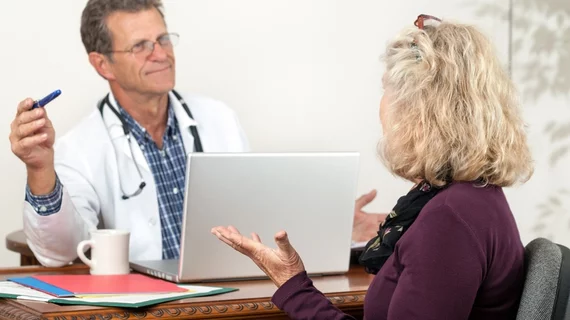Giving patients access to their medical imaging could improve health literacy
In recent years, there has been a big push to streamline data and image sharing processes across the health enterprise, but those efforts often do not take patients’ desires to view their own imaging into consideration.
A new paper in the Journal of Medical Imaging and Radiation Sciences delves deeper into the feasibility of this offering and whether it could cause more harm than good.
“Policymakers wish to extend access to medical records, including medical imaging,” corresponding author Scott Preston, with the School of Health, Wellbeing & Social Care at The Open University in United Kingdom, and co-authors suggested. “If there is some possibility of patients reviewing images, it is important to establish what members of the public can understand of them in the absence of professional training.”
While patients would like to view their imaging, their understanding of what the exams show likely varies. For many, this poses no issue, but some could become anxious about what they feel looks suspicious, even when their exam is interpreted as normal.
“Although literature confirms clinician workload does not increase by providing patient access to medical imaging, there is likely to be some apprehension if the sharing of radiological imaging is provided without careful consideration and research as to how [practitioners] might support those patients who understandably have queries,” the authors noted.
To get a better idea of patients’ understanding of their imaging, researchers conducted a survey among a group of patients who had never worked in healthcare. They were presented with 10 radiographs (just a single projection) and asked to label them as either normal or abnormal. If an image was labeled as abnormal, the group was asked to select the reason for the abnormality from a predetermined list of generic pathologies.
Nearly 66% of the participants correctly labeled the radiographs as normal or abnormal. When it came to identifying the specific abnormality, however, just around 47% selected the correct pathology.
Additional survey data revealed that most respondents were “enthralled with reviewing radiographs and intrigued to understand their performance in identifying abnormalities.”
“This pilot study suggests that patients can participate in image sharing as part of their care. Image sharing may be beneficial to the therapeutic relationship, aiding patient understanding and enhancing consultations between healthcare professional and patient,” the authors suggested.
The group acknowledged that more research is needed to determine how to best execute this sort of image sharing.
The study abstract is available here.

